Known for his works that make use of blood and oil, Russian artist Andrei Molodkin (Buj, 1966) has devoted much of his work to contemporary political systems and in particular to the connections between politics and economics. In 2009 he represented Russia at the 53rd Venice Biennale with the work Le Rouge et le Noir, and his work has been exhibited at major international venues. His often highly controversial works have often been censored, and today the artist, represented by the Milan gallery Giampaolo Abbondio, lives far from his native country. We interviewed him to get his views on current events and to get a brief overview of some of his recent works. The interview is edited by Ilaria Baratta.
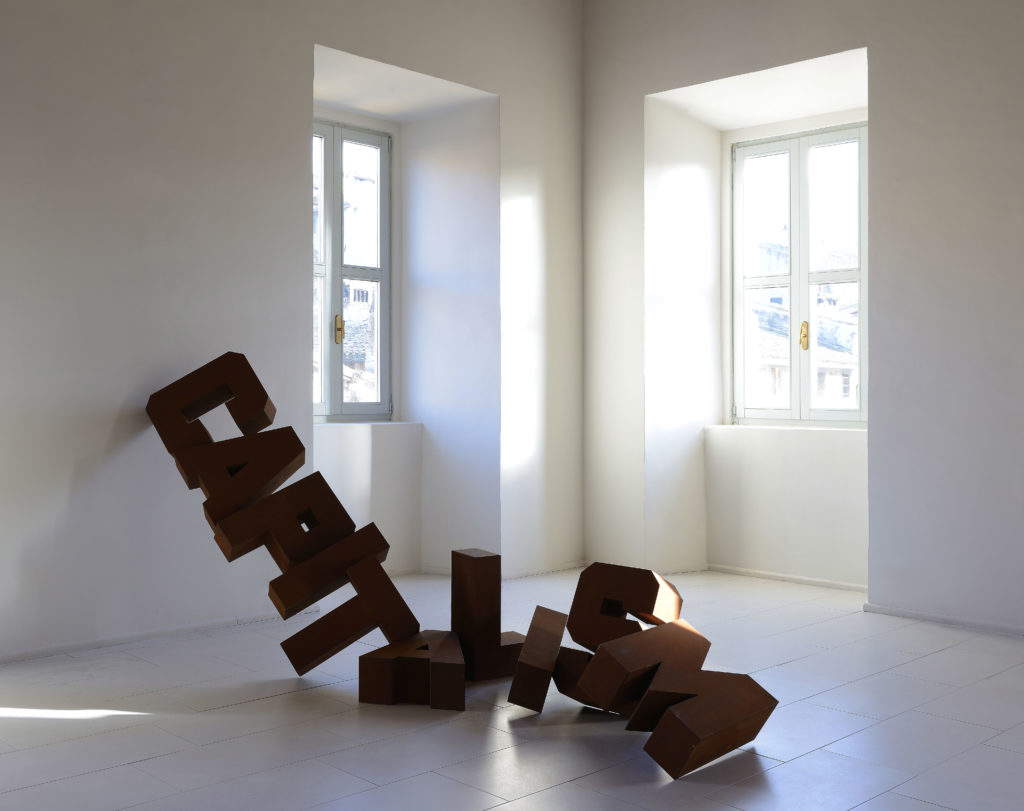
IB. Because of the current situation between Russia and Ukraine, where do you live now, in Paris or Moscow? How much has this situation affected your art?
AM. The war is a great catastrophe, a shock for everyone. It touches our families and we understand that everything starts to change. But no one, no cultural institution can reflect on this. This is a political war, and artists who can communicate ideas in the way Picasso did Guernica can change the world.
How would you define the condition of Russian artists?
When people erase Russian culture, they act exactly like the totalitarian regime of the Soviet Union. The culture of erasure is the most dangerous fascist idea on our planet right now. It has become a great tool for any power.
Your artworks are closely related to politics and the concept of capitalism: how much does politicized art matter to you?
I was born in a small town in the snow in northern Russia. When I was 9 or 10 years old, I used to enjoy putting a lot of metal nails on the railway and was surprised to see how the train flattened them. Then I started to put more and more objects on the track, for example, money, metal buttons. They were being crushed in different ways. I became so curious that I used bigger and bigger things, but then one day I crashed the train. This memory has stayed with me until now-I am still trying to understand what it means to turn one object into something else, to take something from one world and turn it into another.

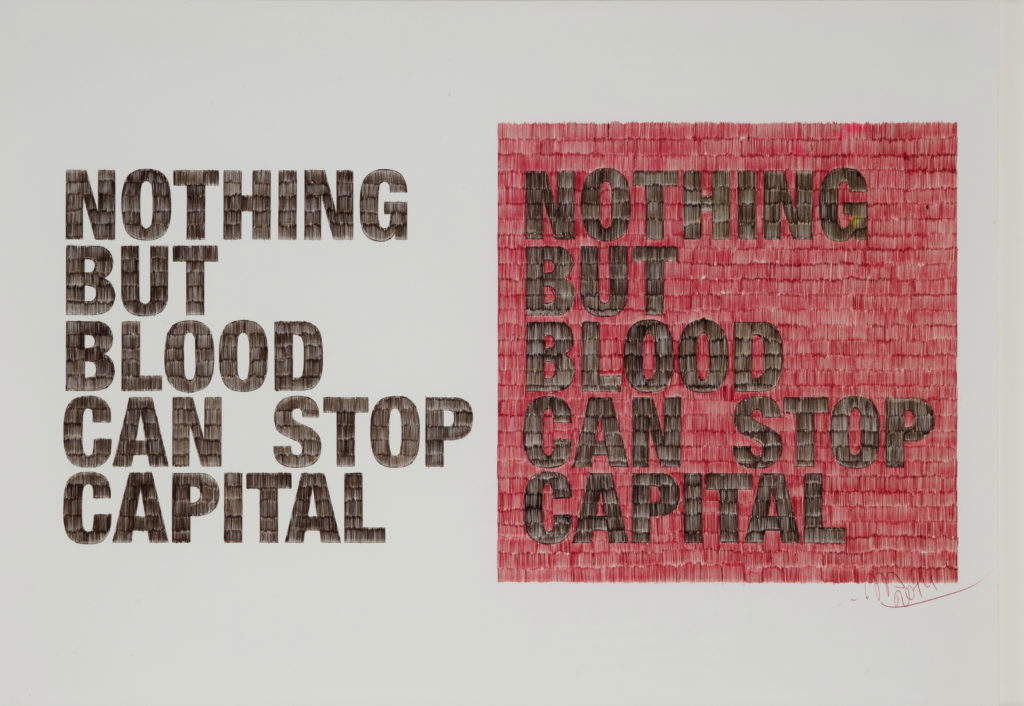
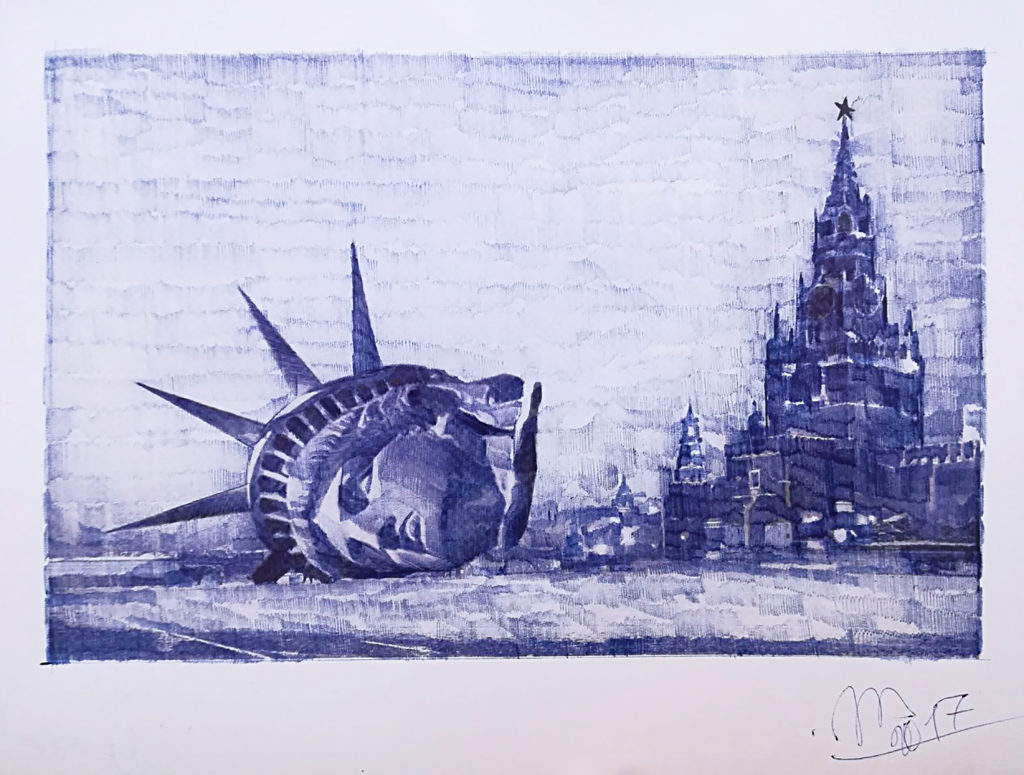
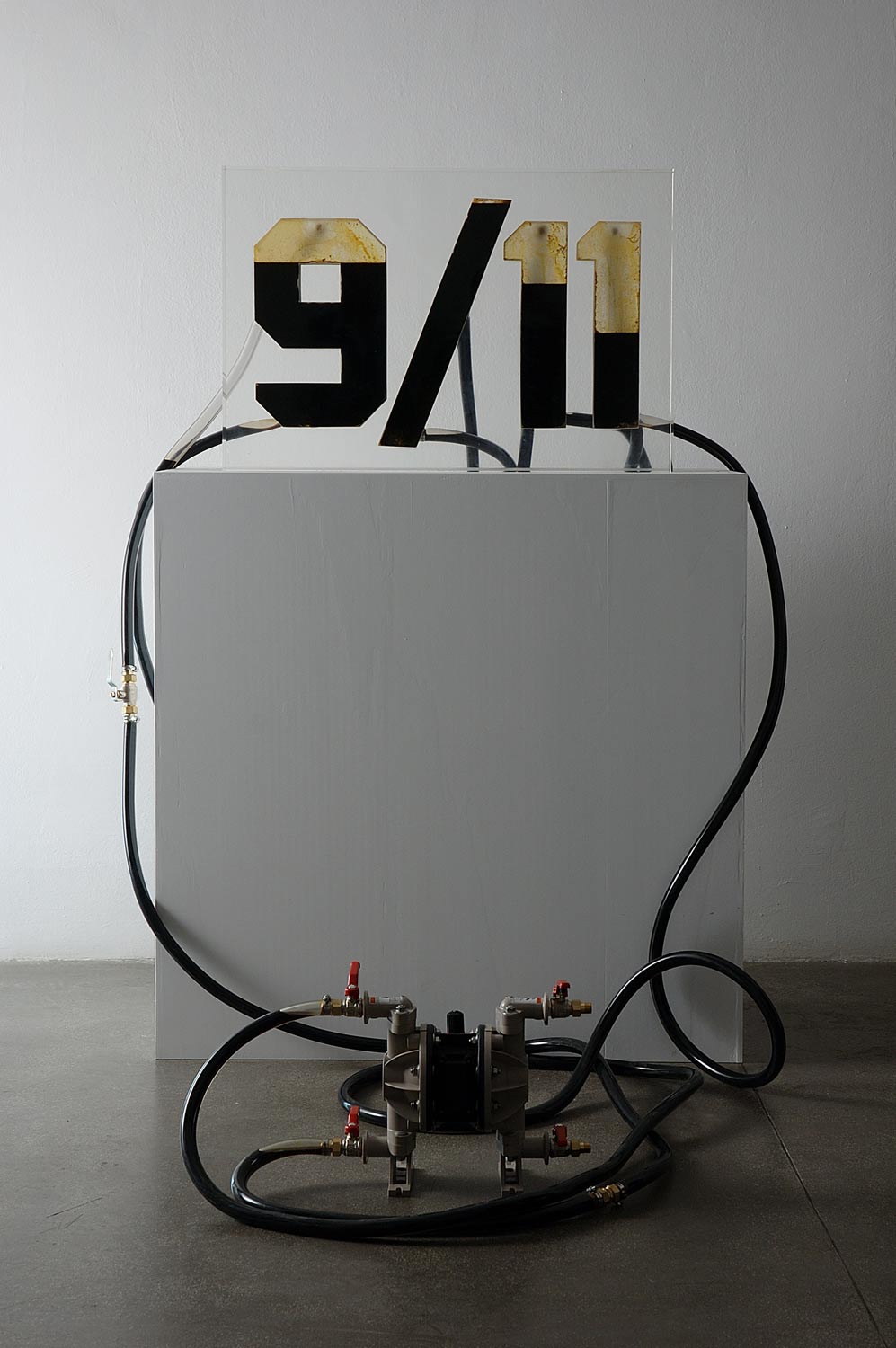
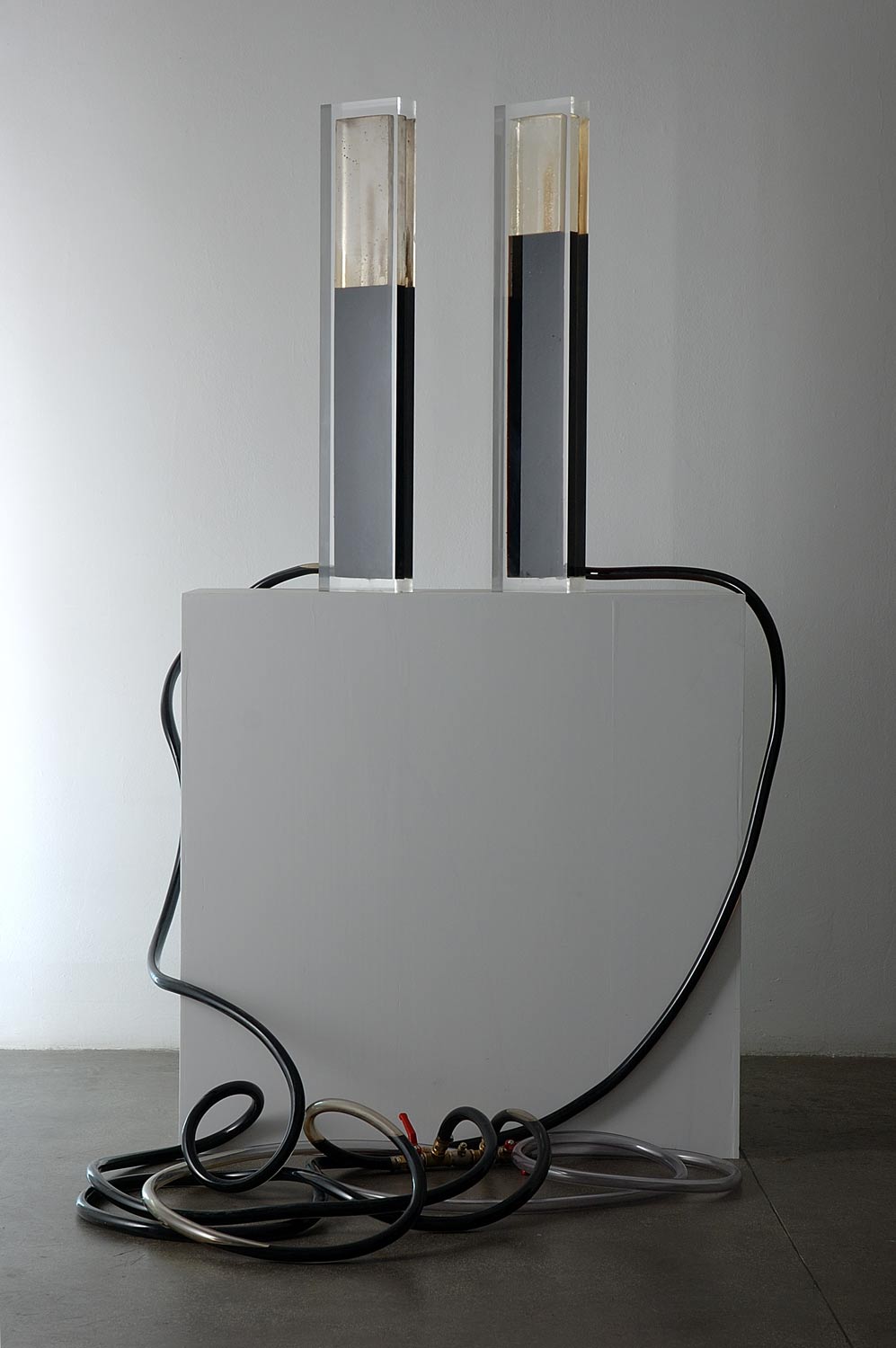
Let’s take two works such as Broken Capitalism and Fallen Capitalism from 2015: why do you represent the fallen letters from the word “CAPITALISM”? What does it mean? Also, what do the words “Nothing but blood can stop capital,” which appear in several of your works and gave the title to one of your exhibitions in Milan, Italy, mean?
Blood and oil are both currencies of war and genocide. I use industrial materials to pump the liquid through this cycle. When people donate their blood to my sculptures, the work is immediately politicized. I never use my own blood, liquid or personality because I was born in a militaristic country, in a totalitarian regime. I use everyone’s language. Words like “Democracy,” “Capitalism,” and “Human Rights” are filled with the blood of a specific group of people, or the oil of a region in conflict-Iran, Iraq, and so on. The material fills and transforms these concepts into something different, something new.
Blood, which is used as a material for artwork with crude oil and ink, is like ink flowing from a pen, in the same way that crude oil (She delivered it to Siberia when she served in the Russian army) represents a lifeblood flowing through the Western system. So what is the connection between blood, ink and crude oil?
When I was transporting missiles across Siberia I received ballpoint pen pens, for writing home to family, and cigarettes. I didn’t smoke, so I would exchange the cigarettes for other pens and draw. Later I would use the concept of the empty pen in my work to reflect human bodies, the empty ships of war, impoverished at the hands of politicians like Bush.
In each artwork You also refer to the United States, as in Liberty on the Red Square, Twin Towers and Nine Eleven. What does the U.S. represent in your artwork?
For White House Filled with the Blood of U.S. Citizens, I used blood donated by U.S. citizens, inside the so-called symbol of democracy: the White House. My sculpture of the building, around which blood flows, was to be installed in Washington, D.C., but the operation was canceled the day before because ofescalating violence. It was deemed too dangerous a work to show. I encouraged those who are deeply disillusioned with U.S. politics to come and donate their blood to this piece. As usual, we had a qualified nurse on hand to administer the donations. It is important for politicians to see that the public is willing to shed blood for their battle, not just for wars fought in the name of false democracy.
What do you think will be the future of Russian artists? And what are your future plans?
A young group of Web3 professionals worked long and hard to create an NFT series Putin Filled with Ukrainian Blood, with proceeds from sales going to UNICEF to fund blood transfusions. The artwork was already on Red Square on Victory Day and is now available outside every Russian embassy around the world.
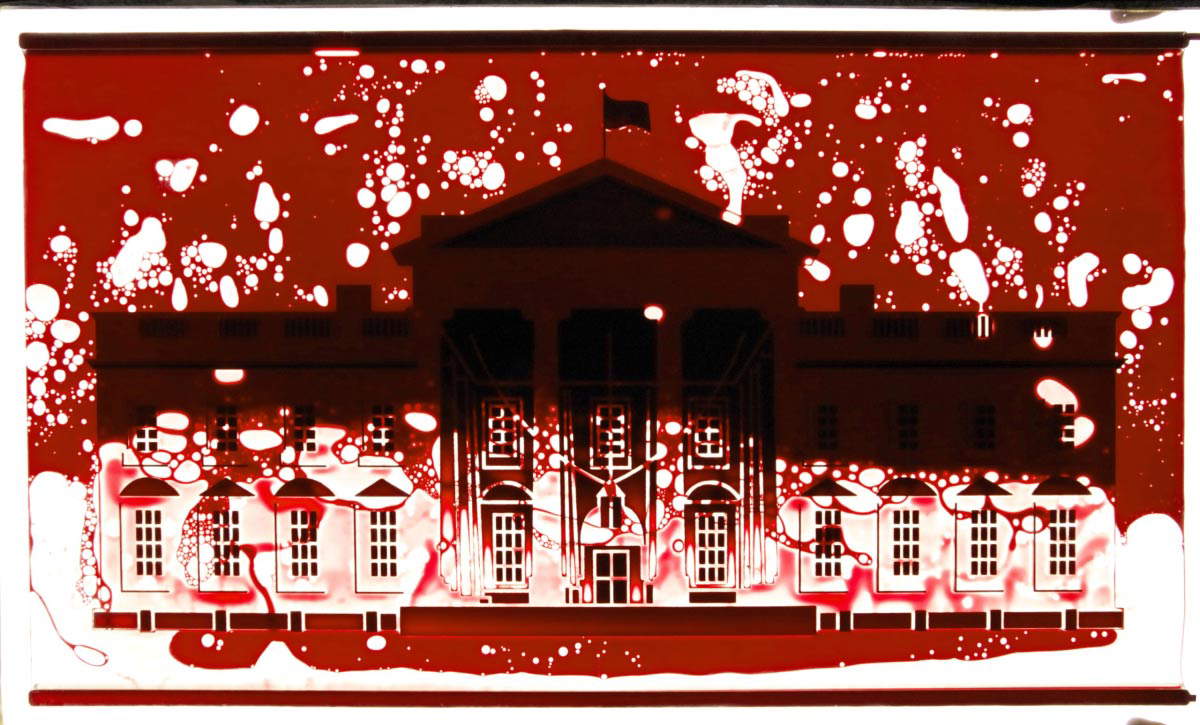

Warning: the translation into English of the original Italian article was created using automatic tools. We undertake to review all articles, but we do not guarantee the total absence of inaccuracies in the translation due to the program. You can find the original by clicking on the ITA button. If you find any mistake,please contact us.